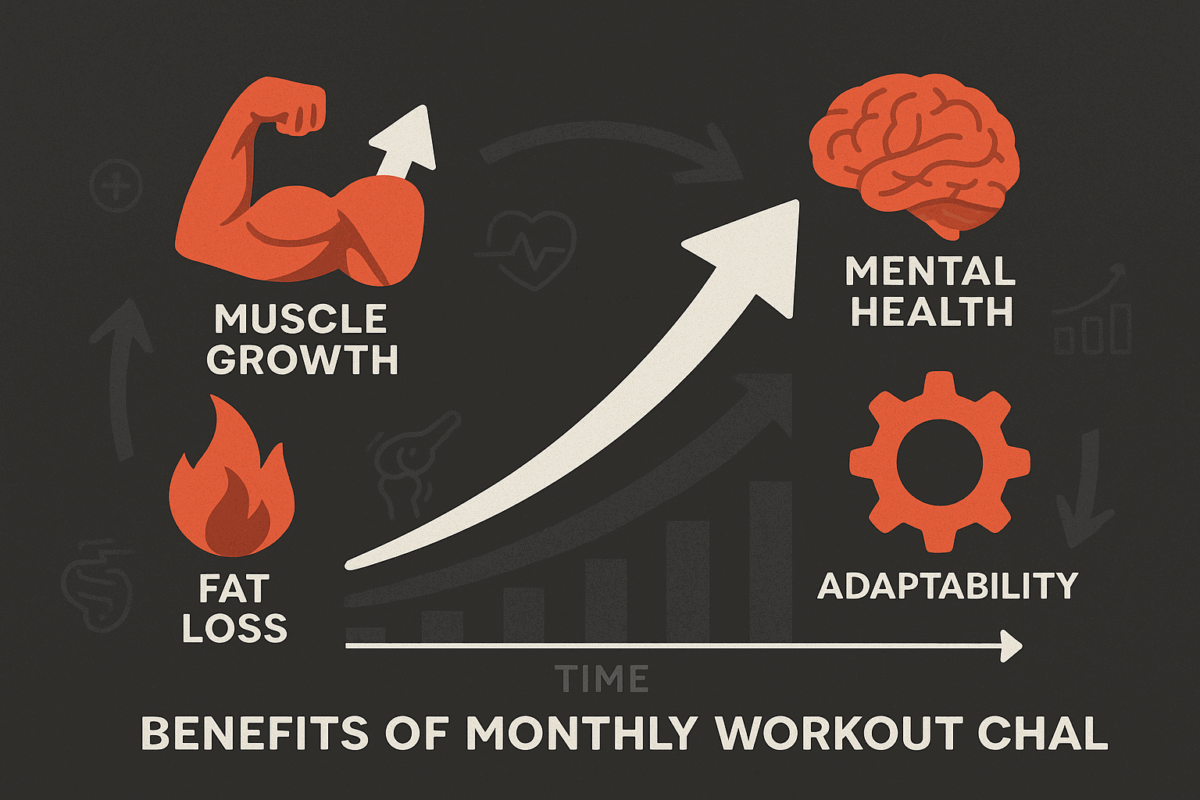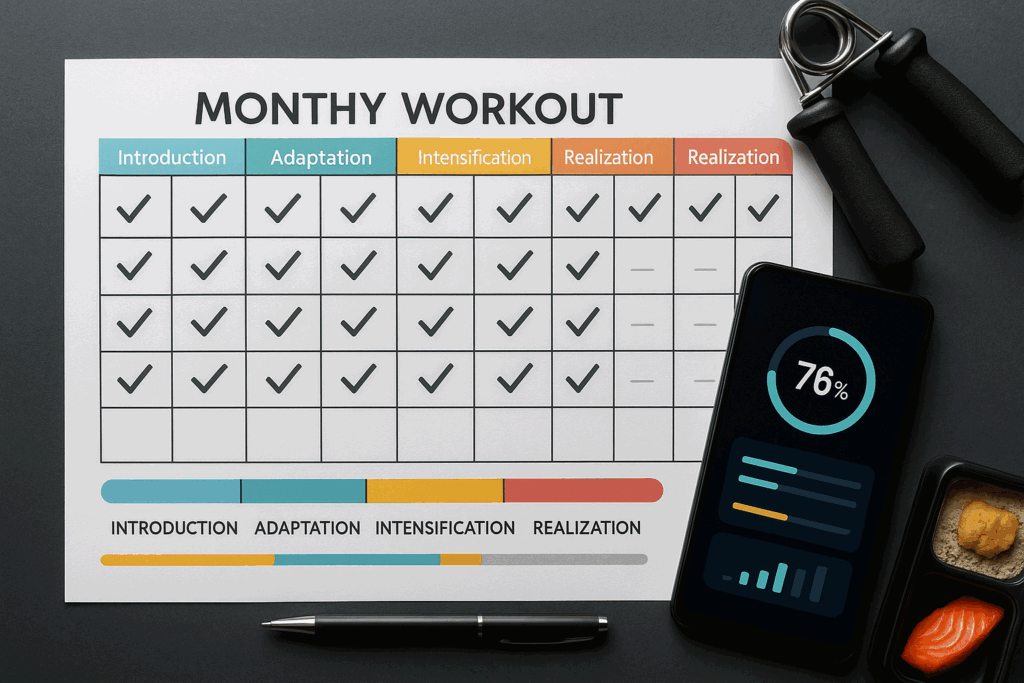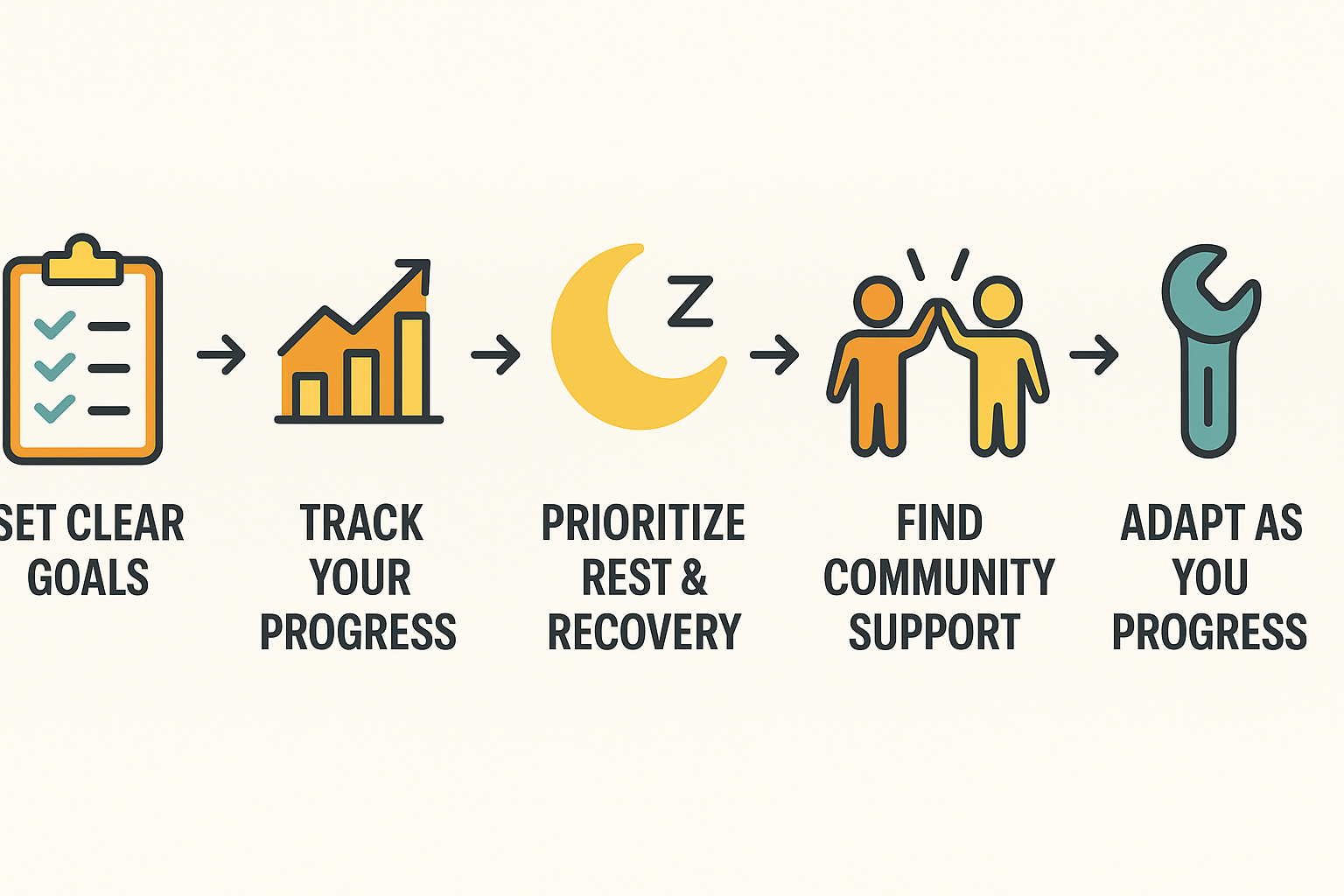Why Monthly Workout Challenges Are the Missing Link in Your Training Routine
Many individuals begin a fitness journey with enthusiasm, only to see their motivation wane as routines become stagnant or goals seem distant. Enter monthly workout challenges—a dynamic and results-driven strategy that breathes new life into training. These challenges harness the power of short-term goals within a structured timeline to spark motivation, discipline, and tangible progress. At their core, monthly workout challenges create urgency and accountability while also offering variety, which is crucial for both physical adaptation and mental engagement.
Unlike traditional programs that often lack immediate milestones, workout challenges operate on a 30-day cycle, making goals feel more attainable. Whether you’re a seasoned athlete looking for new stimuli or a newcomer seeking structure, integrating monthly workout challenges into your training can rapidly elevate your results. The real power lies in the consistent rhythm of focused progression: each month becomes a new opportunity to fine-tune specific fitness elements like endurance, strength, mobility, or hypertrophy. This makes them not only sustainable but also adaptable to any lifestyle or training environment.
For those seeking workout challenges for guys or anyone exploring a beginner fitness challenge, this framework delivers on every level. It promotes growth in physical capacity while also training mental grit. The consistent feedback loop of challenge, adaptation, and reward reinforces long-term commitment and helps crystallize the habits that underpin a lifelong fitness lifestyle.
You may also like: The Ultimate 30-Day Workout Plan for Men Working Out in the Gym: Proven Full Body Strength Exercises to Maximize Results
The Science-Backed Benefits of Monthly Workout Challenges
Physiologically, the human body thrives on adaptation, and monthly workout challenges leverage this to maximum effect. Changing variables such as volume, intensity, frequency, and movement type within a defined period helps prevent plateaus and promotes continuous muscular, neural, and cardiovascular development. This frequent variation supports progressive overload—the backbone of all physical improvement—while reducing the risk of overuse injuries and psychological burnout.
Each 30-day challenge becomes its own microcycle within a broader periodization model, making it ideal for building muscle, boosting aerobic capacity, or enhancing athletic skill. For example, a challenge focusing on pull-ups may emphasize neural recruitment and scapular control in the first week, strength adaptation in the second, hypertrophy in the third, and performance in the fourth. By progressing from foundational skills to peak output, participants experience measurable gains that extend beyond vanity metrics.
Another benefit of monthly workout challenges is the psychological impact of clearly defined goals and frequent reassessment. This tight feedback loop can improve adherence, increase dopamine release upon completion, and reduce training monotony. Even for advanced lifters or athletes, a well-designed monthly challenge can serve as a deloading tool, cross-training supplement, or performance primer.
Most importantly, these challenges are inherently scalable. Whether adapting a workout challenge for beginners or tailoring one for advanced performance enhancement, the principles remain rooted in exercise science. The format empowers users to set realistic goals while progressively achieving levels of fitness that once seemed out of reach.

Structuring Monthly Workout Challenges for Consistency and Progress
Designing effective monthly workout challenges begins with clarity of purpose. Each challenge should target a specific attribute—be it strength, endurance, flexibility, or a combination—and be structured with a clear progression. To do this successfully, the month can be broken down into weekly phases: introduction, adaptation, intensification, and realization. This phased approach mirrors professional training cycles and supports sustainable growth without overload.
For instance, a beginner fitness challenge focused on core strength might start with fundamental planks and bird-dogs in week one, progress to dynamic core movements in week two, incorporate weighted variations in week three, and culminate in a time-based AMRAP (as many reps as possible) assessment in week four. Each phase builds logically on the last while respecting recovery and joint integrity.
Challenge logistics should include frequency (how many days per week), duration (time spent per session), and movement diversity. A well-balanced challenge might incorporate resistance, cardio, mobility, and bodyweight modalities in varying proportions depending on the objective. Including optional “bonus” days or rest day mobility sessions ensures flexibility without compromising progression.
Tracking systems are vital for motivation and analysis. Whether through a mobile app, printed tracker, or shared spreadsheet, participants should record reps, time, load, or subjective effort ratings. Visual data reinforce progress and encourage adherence. Social support—through online forums, accountability partners, or group challenges—further enhances engagement.
The most effective workout challenges are those that feel personal. Customization is key: challenge yourself within your capacity, then exceed it the next month. Whether you’re refining the best exercise challenge you’ve ever attempted or exploring monthly workout challenges for the first time, structure and consistency will define your success.

Monthly Workout Challenges for Strength and Muscle Growth
For lifters who thrive on resistance training, monthly workout challenges provide the ideal framework for muscle-specific progression and recovery. A common mistake in hypertrophy training is monotony—doing the same exercises with the same volume for months on end. Challenges offer a fresh lens through which to target a muscle group or compound lift while embedding progressive overload.
A strength-focused monthly challenge might center on the barbell squat. Week one could emphasize mobility, technique, and positional awareness. Week two might include submaximal load with moderate reps. Week three increases volume with accessories like split squats and leg presses. Week four peaks with low-rep, heavy squats followed by a 5-rep max assessment. This kind of challenge sharpens technique while stimulating hypertrophy and strength development.
Workout challenges for guys often prioritize big lifts, but should also incorporate posterior chain, shoulder, and grip development. A challenge focused on deadlifts, for example, can include kettlebell swings, banded RDLs, and grip circuits. These improve not only lift performance but also athletic posture and injury resilience.
The key to a successful strength challenge is sustainability. Overreaching in week one leads to burnout. Gradual progression, deloading in week four, and recovery-enhancing practices such as sleep hygiene and strategic nutrition ensure gains are not only made, but retained. Monthly workout challenges structured around muscle growth can deliver transformative results when executed with intelligence and intent.

The Role of Monthly Workout Challenges in Fat Loss and Conditioning
Fat loss is most effectively achieved through consistent energy expenditure, progressive overload, and metabolic stimulation. Monthly workout challenges designed for fat loss should combine strength and cardiovascular components in creative ways that keep the body guessing and the mind engaged. HIIT, metabolic resistance training, circuit work, and steady-state cardio all have a place in such challenges.
One effective model is a 30-day full-body metabolic challenge. This could alternate strength circuits with cardio intervals, gradually increasing duration or intensity each week. Movements might include goblet squats, mountain climbers, kettlebell swings, and burpees. By manipulating rest periods, load, and tempo, these sessions train both aerobic and anaerobic systems, improving conditioning while promoting fat oxidation.
Workout challenges for guys with a fat-loss goal should avoid overly complex programming in favor of simplicity and consistency. For example, a daily challenge of 100 pushups, 50 lunges, and a 10-minute run may sound basic, but when scaled with intensity and performed daily, it delivers powerful results.
Nutrition remains essential. Without adequate protein intake and caloric control, even the best exercise challenge may underdeliver. Including a nutritional guideline alongside the challenge can amplify results and provide clarity. Encouraging participants to journal meals or use tracking apps creates a holistic system of input and feedback.
Monthly workout challenges designed with fat loss in mind should prioritize full-body movement, progressive resistance, minimal equipment dependency, and frequent variation. This keeps both body and brain engaged, resulting in better adherence and faster outcomes.

Embracing the Lifestyle: Long-Term Success Through Monthly Workout Challenges
The long-term success of any fitness journey hinges on consistency, engagement, and adaptability—qualities that monthly workout challenges inherently promote. By reframing fitness as a sequence of short-term goals that roll into long-term habits, challenges can transform how individuals view their physical potential. Rather than committing to vague year-long resolutions, participants take on manageable, focused goals that yield tangible results within four weeks.
Monthly workout challenges foster a mindset of constant evolution. One month may focus on building upper-body strength; the next may improve cardiovascular endurance or mobility. This rotating focus prevents burnout and boredom while allowing time for recovery and renewed motivation. Over time, these monthly cycles create a self-perpetuating rhythm of challenge, growth, and mastery.
Moreover, these challenges can serve as educational tools. Each one teaches something new: better form, smarter nutrition, more efficient recovery. The cumulative effect is a more empowered, informed athlete who understands their body and how to move it optimally. This enhances confidence, autonomy, and sustainability.
Even when results plateau or life disrupts routine, the monthly format offers a reset point. A skipped week doesn’t derail the entire year; it’s just a hiccup in a larger mosaic of progress. With this structure, individuals of all fitness levels can build momentum through setbacks and celebrate victories without comparison or perfectionism.
Monthly workout challenges are not just another trend; they are a proven framework for sustainable transformation. They combine structure with flexibility, science with psychology, and discipline with reward. For anyone serious about crushing their fitness goals, these challenges may just be the breakthrough they’ve been waiting for.

Frequently Asked Questions: Maximizing Results with Monthly Workout Challenges
1. How Do Monthly Workout Challenges Improve Long-Term Fitness Outcomes?
Monthly workout challenges create sustainable momentum by breaking down larger fitness goals into achievable 30-day segments. This approach reinforces consistency, promotes habit formation, and provides frequent psychological rewards, which are key to adherence. Long-term results often stem from accumulated micro-successes, and each monthly challenge acts as a stepping stone toward broader transformation. The diversity of goals from month to month keeps the training engaging and allows the body to adapt across multiple performance domains. Over time, this results in a well-rounded fitness foundation built from progressive, structured experiences.
2. What Are the Best Exercise Challenge Formats for Busy Schedules?
Busy professionals can benefit from minimalist workout challenges that emphasize efficiency and versatility. High-intensity interval training (HIIT) circuits, EMOM (Every Minute on the Minute) sets, and tabata formats are ideal because they deliver intensity in short time frames. The best exercise challenge for time-crunched individuals often requires no more than 20-30 minutes and uses bodyweight or minimal equipment. Flexibility is critical: challenges that allow for daily variation and movement substitution ensure better adherence. Technology, such as fitness apps or pre-recorded videos, can also enhance accessibility and streamline workout integration into busy routines.
3. How Should Beginners Approach Their First Monthly Workout Challenges?
A beginner fitness challenge should focus on foundational movements, mobility, and consistency rather than complexity or intensity. Exercises such as squats, pushups, planks, and lunges form the bedrock of early progress, while emphasizing good form and range of motion. A 3-day or 4-day-per-week structure is typically sufficient for adaptation without excessive fatigue. For novices, tracking perceived exertion and joint response helps tailor effort appropriately. Educational components—such as video demonstrations or progression guidelines—empower beginners to stay safe while building confidence.
4. Can Monthly Workout Challenges Help With Mental Discipline?
Absolutely. Monthly workout challenges train the mind as much as the body. By committing to a structured 30-day plan, individuals practice discipline, build self-efficacy, and develop resilience in the face of discomfort. Sticking to daily or weekly targets despite fatigue, boredom, or schedule changes cultivates grit and follow-through. These psychological benefits often extend into non-fitness areas of life, such as work, relationships, and decision-making. For many, the structure of monthly workout challenges provides a much-needed anchor during periods of stress or transition.
5. What Are the Best Monthly Workout Challenges for Guys Focused on Muscle Building?
Workout challenges for guys seeking hypertrophy should prioritize progressive overload, compound lifts, and targeted isolation work. A well-structured muscle-building challenge might include three to four strength-focused days per week with added metabolic conditioning for recovery. Volume progression, such as increasing reps, sets, or load across weeks, should be built into the plan. Compound lifts like squats, bench presses, and pull-ups should be paired with accessory work for shoulders, arms, and posterior chain development. When combined with high-protein nutrition and sleep optimization, these challenges produce visible gains.
6. How Can Monthly Workout Challenges Be Adapted for Travel or Limited Equipment?
One of the strengths of monthly workout challenges is their scalability. For those traveling or training in minimal environments, challenges can be designed around bodyweight, bands, or small portable tools like resistance loops or TRX systems. Movement substitutions—such as replacing barbell squats with goblet squats or using staircases for step-ups—enable continuity without sacrificing intensity. The focus shifts toward tempo manipulation, unilateral work, and circuit volume. This adaptability ensures that commitment to the challenge isn’t derailed by logistics.
7. Are There Health Benefits Beyond Aesthetics in Monthly Workout Challenges?
Yes, the benefits of monthly workout challenges extend far beyond visual transformation. Cardiovascular health, insulin sensitivity, muscular endurance, posture, and joint stability all improve through consistent physical engagement. Challenges that include flexibility, core stability, or breath control can also enhance neurological balance and stress regulation. Additionally, participation in regular workout challenges supports immune function and mood stabilization through endorphin release and metabolic regulation. Over time, these challenges foster a holistic definition of health that transcends mere physique.
8. How Do You Avoid Burnout When Participating in Consecutive Monthly Workout Challenges?
To prevent overtraining and mental fatigue, it’s essential to periodize your monthly workout challenges. This means alternating between high-intensity months and lower-volume or mobility-focused months. Strategic deloads—where intensity is reduced—allow for recovery and longevity. Including mindfulness practices, sleep hygiene, and mobility work within each challenge supports mental and physical regeneration. Listening to biofeedback such as appetite, sleep quality, and joint stiffness provides cues for necessary adjustment. Recovery isn’t a pause; it’s a critical performance enhancer.
9. How Do Monthly Workout Challenges Encourage Community and Social Accountability?
Social engagement significantly boosts motivation and retention in monthly workout challenges. Sharing progress through social media, messaging groups, or gym communities builds a network of accountability and celebration. Friendly competition, milestone check-ins, and challenge-specific hashtags add excitement and shared momentum. For those participating in virtual challenges, progress trackers, weekly video calls, or team formats reinforce connection. The sense of belonging and mutual encouragement often transforms the challenge from an individual pursuit to a collective achievement.
10. Why Are Monthly Workout Challenges Ideal for Reinventing Your Routine?
Monthly workout challenges offer a clean slate every four weeks, making them a powerful tool for breaking stagnation and exploring new modalities. They allow experimentation with yoga, kettlebell training, plyometrics, or athletic skills without long-term commitment. This rotating exposure sharpens diverse motor skills and prevents both physical and mental plateaus. They are also ideal for assessing what training styles work best for your goals, recovery, and lifestyle. With each completed challenge, you become more attuned to your body’s needs and more capable of designing a sustainable, enjoyable training future.

Conclusion: Redefining Fitness One Month at a Time
Monthly workout challenges offer a powerful, accessible, and results-driven way to break through stagnation and achieve lasting fitness progress. They combine the best of training science, habit psychology, and community accountability into a format that is both engaging and effective. By focusing on short-term achievement with long-term impact, these challenges empower participants to push their limits, learn their bodies, and redefine their goals.
Whether you’re exploring a beginner fitness challenge or refining the best exercise challenge for peak performance, the structure and versatility of monthly workout challenges make them an essential tool in your training arsenal. They support fat loss, muscle growth, mental resilience, and holistic wellness. As your needs evolve, these challenges evolve with you.
So, the next time motivation dips or results plateau, don’t quit. Instead, pivot. Choose your next 30-day challenge, commit fully, and discover what you’re capable of. With powerful monthly workout challenges as your guide, there’s no limit to what your fitness journey can become.





